The Tiantishan Grottoes are a series of rock carved Buddhist cave temples in the Liangzhou District of Wuwei, Gansu, northwest China. The Buddhist sculptures date back to the 6th century and are considered some of the finest examples of ancient Chinese art, attracting visitors from around the world to admire their beauty and historical significance.
In this blog post, we will explore the history and significance of the Tiantishan Grottoes, as well as provide tips for visitor planning.
History of the Tiantishan Grottoes
The Tiantishan Grottoes were originally carved out during the Northern Liang Dynasty. It is rumored that Juqu Mengxun, the king of the Xiongnu-led Chinese Northern Liang dynasty, was dedicated to promoting Buddhism and supporting Zen monks. He commissioned the creation of permanent Buddhist grottoes in the cliffs of TianTiShan Grottoes. With construction continuing through the Northern Wei until now, the grottoes served as a place of worship and meditation for Buddhist monks and pilgrims.
Getting There
The caves are in a hard-to-reach area with lots of mountains. Make sure to plan your trip there carefully. You can take a bus from Wuwei City, which is about two hours away by car. You can also rent a car or go on a tour, which might be easier.
Exploring the Tiantishan Grottoes
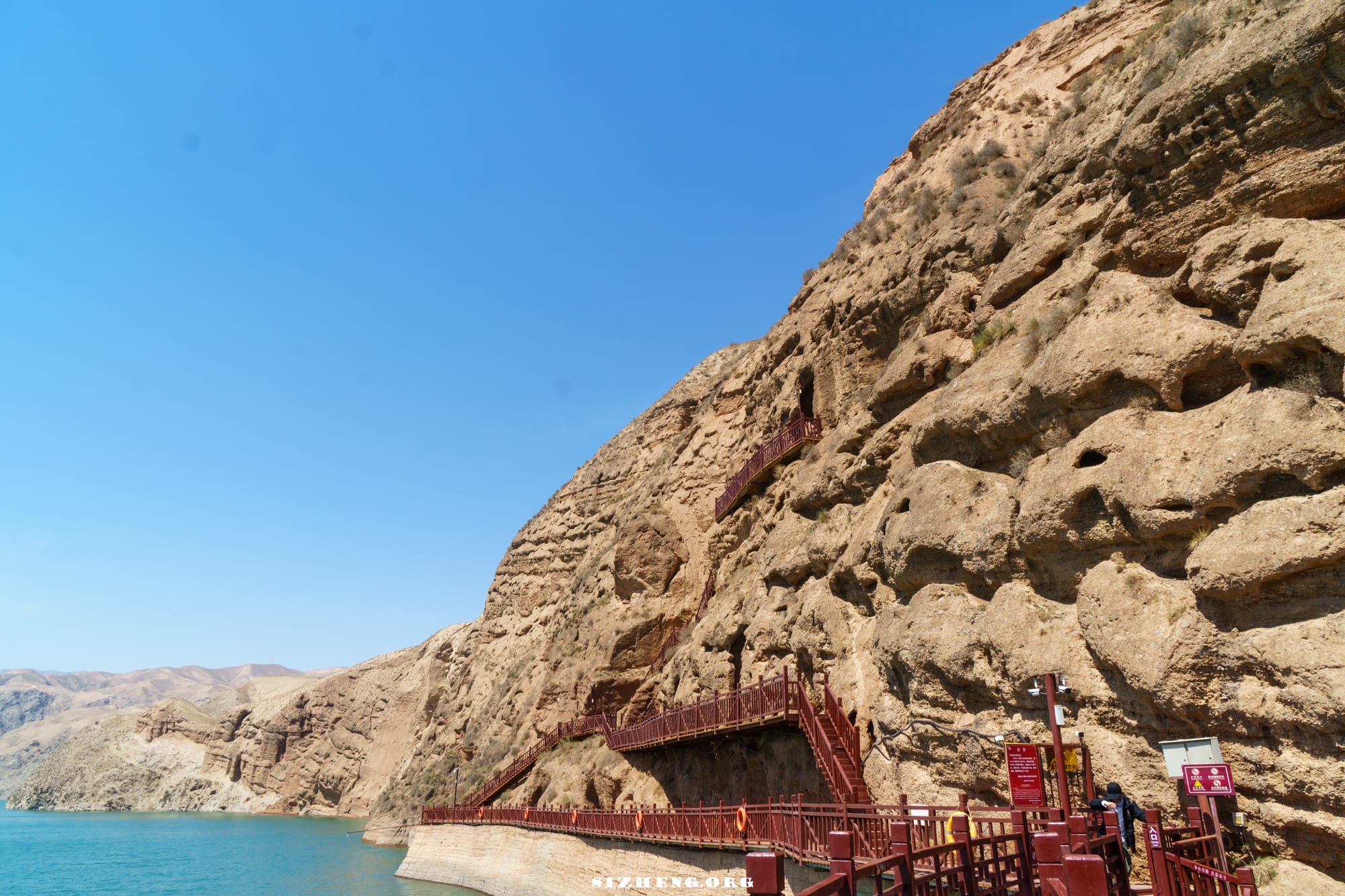
The biggest cave in Tianti Mountain that we can go to is the 13th grotto. It’s so big and full of large statues and paintings that it wasn’t moved when they built the Huangyang River reservoir. That’s why we can still see it today.
The Xixia, Yuan, Ming, and Qing dynasties later restored the Tang Dynasty-excavated 13th grotto. Unfortunately, the head of the Buddha was shaken off during the great earthquake of Gulang in 1927 AD and was not well repaired. Additionally, it experienced significant damage during the Cultural Revolution. However, in 1998 A.D., Mr. Li Yunhe led a major repair to restore the cave.
An eight-story building was built in this cave, which was more than 50 meters high.
“Re-repairing Liangzhou Guangshan Temple Inscription” from the Ming Dynasty
The Buddha in the center, with his right hand applying the Fearless Seal, was originally depicted with crippled fingers and is sitting with his left hand holding his knee. The two disciples, two Bodhisattvas, and two heavenly kings on both sides appear rough and clumsy.
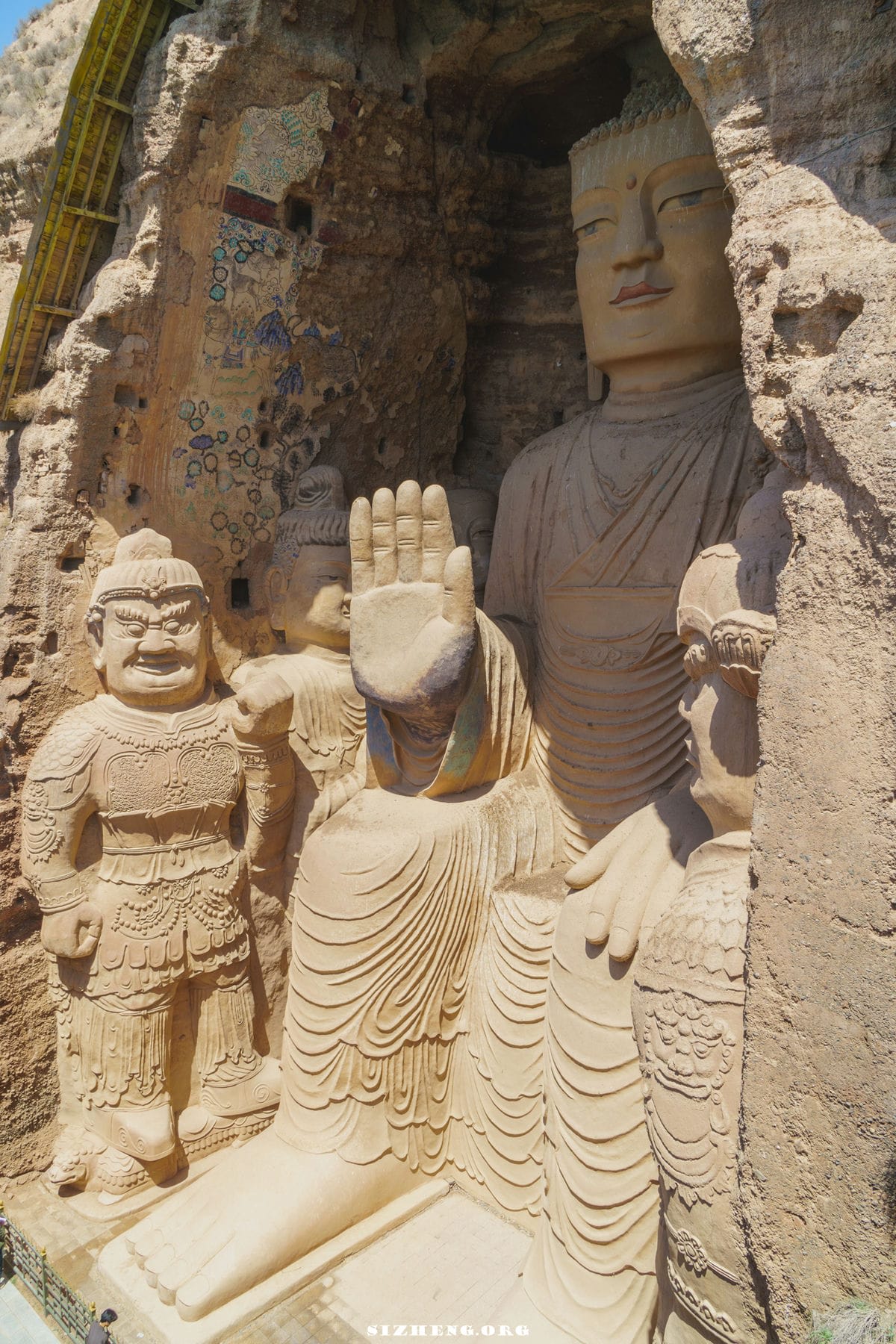
On the left side, the Tenno is depicted standing with his left leg on a crouching lion and his right foot on a tall Yaksha.
Almost all of the top and main wall surface layers have peeled off, leaving only two sides of the upper part with Qing dynasty murals depicting flowers, trees, deer, white elephants, green lions, and other animals. The quality of the remaining murals is relatively poor.
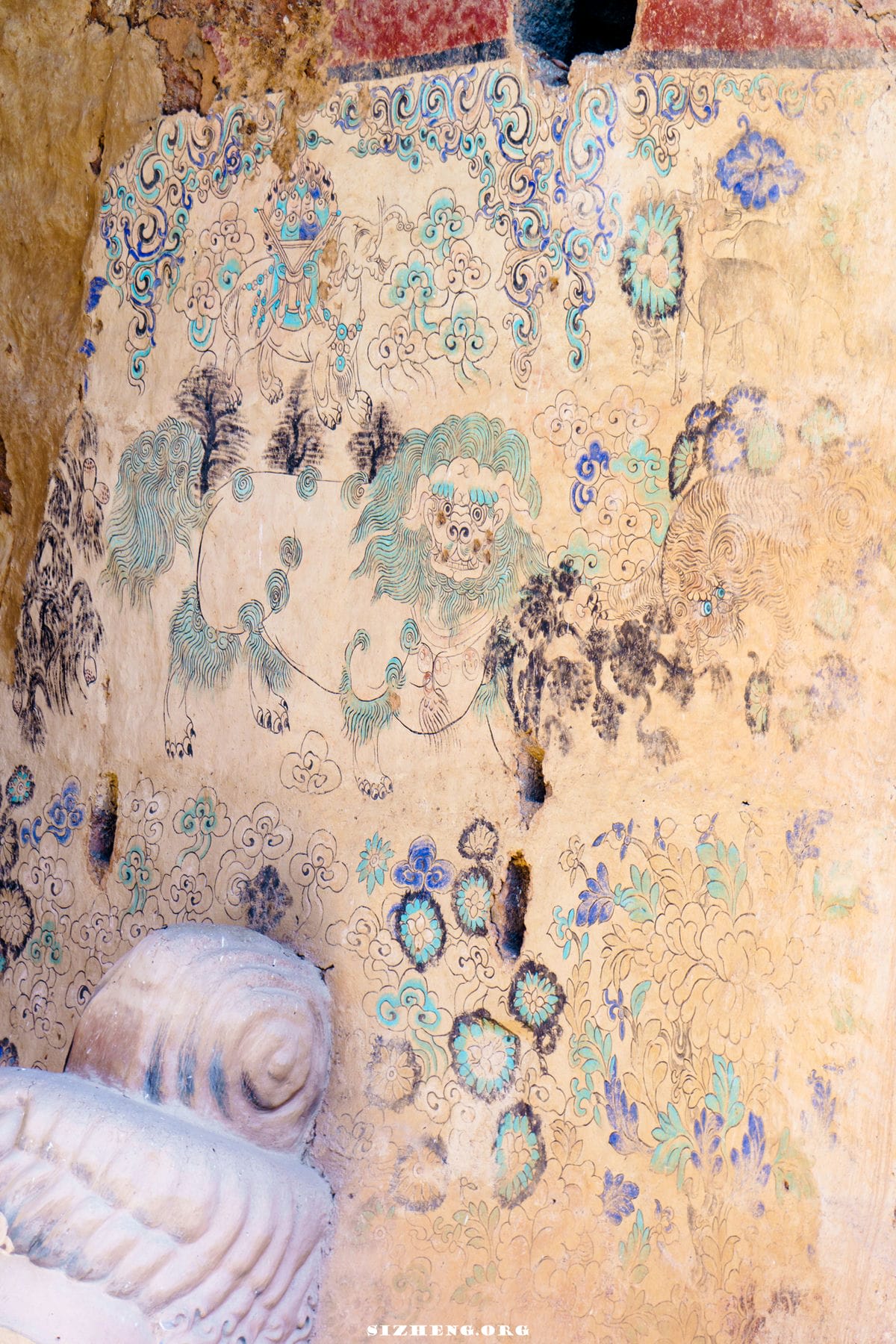
The 13th grotto is located behind the Huangyang River Reservoir. Long ago, the Huangyang River ran past cliffs, making a perfect spot for the popular Zen practice of creating a cave between the cliffs at the water’s edge to avoid disturbances and observe meditation. Nowadays, this river has been turned into a reservoir, which supplies water to nearby places and helps with farming. However, this change is not good for the old meditation caves.
The construction of the Huangyang River Reservoir during the Great Leap Forward period had a significant impact on the Tiantishan Grottoes. Due to miscalculations and inadequate audits by the reservoir’s engineering office, which caused challenges for those trying to save the grottoes, they had to move the grottoes, which caused some damage. Later on, during the Cultural Revolution, important materials were gone again. Also, the construction of the reservoir led to the loss of the Guangshan Temple, which was below the grottoes.
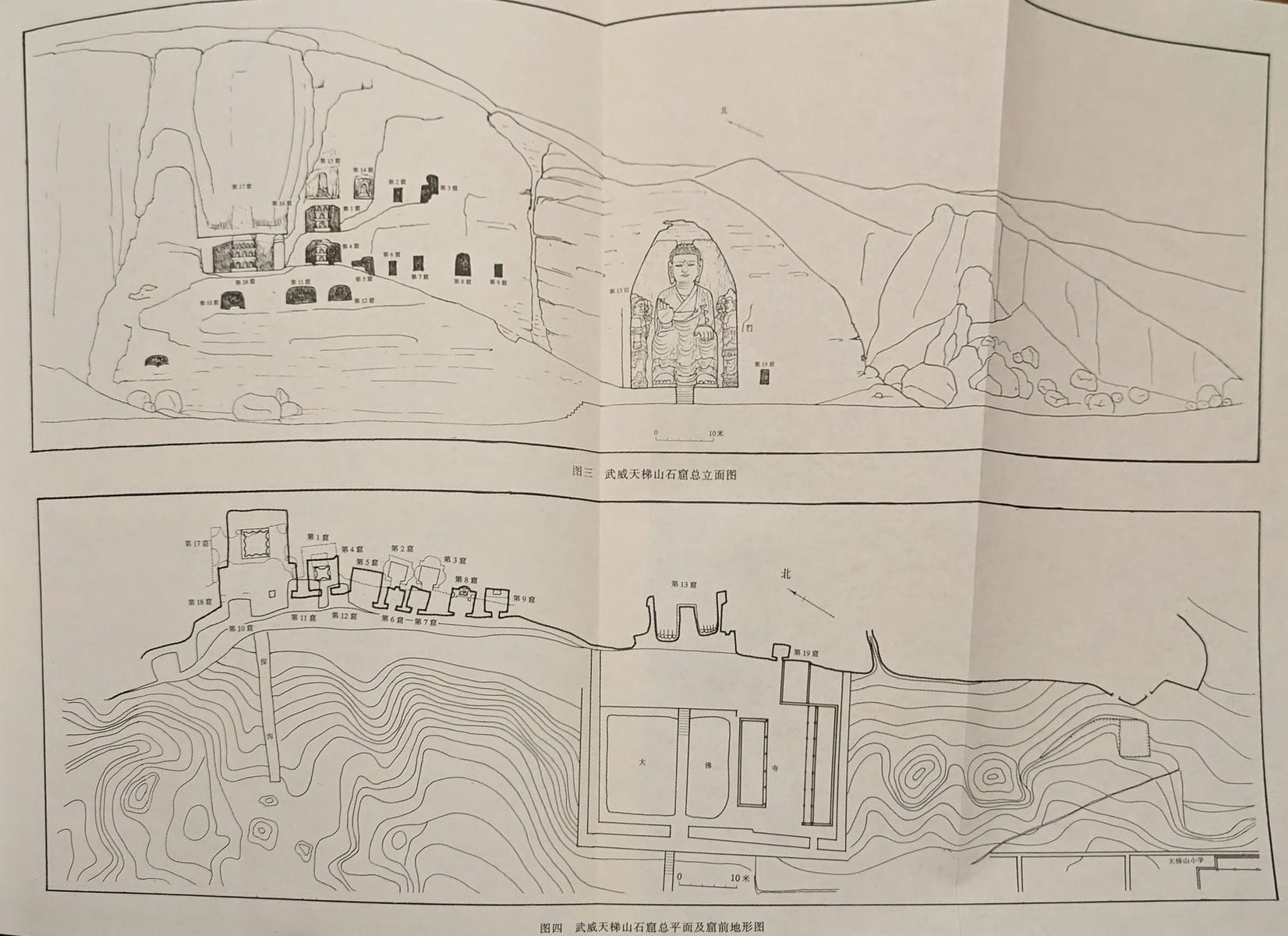
Cultural Significance
The Tiantishan Grottoes influenced the later construction of grottoes in the Central Plains, such as the Yungang Grottoes, the Longmen Grottoes, the Maijishan Grottoes, the Northern Grottoes, and others. Therefore, it is also known as the ‘originator of the grottoes’. The Tiantishan Grottoes played a crucial role in the development of Buddhist art and architecture in China.
The Tiantishan Grottoes are close to areas where earthquakes happen a lot. Over time, these earthquakes caused many caves to fall apart and get ruined. Plus, after being around for thousands of years and with the effects of weather, water, and soil buildup, not many are left. People have tried to fix up the caves many times, but because of this and some harmful actions, the caves don’t look like they did originally anymore.
Therefore, the Tiantishan Grottoes site does not feature the famous LiangZhou grotto landscape, which is regrettable. However, it’s still nice to visit for what it has to offer.
Conclusion
Even though the TianTiShan caves have changed over the years, they are definitely worth a visit. They are important for understanding old Chinese art and Buddhist cave art, and travelers who like history will find them very interesting.


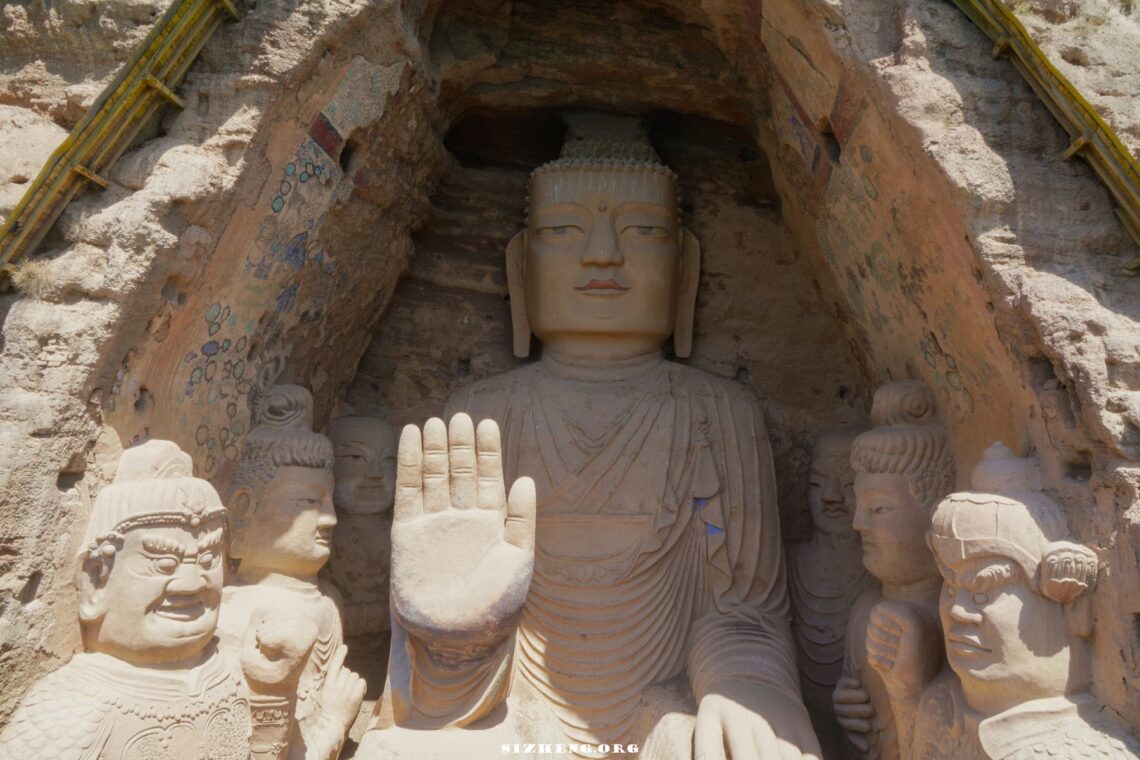





Leave a Reply